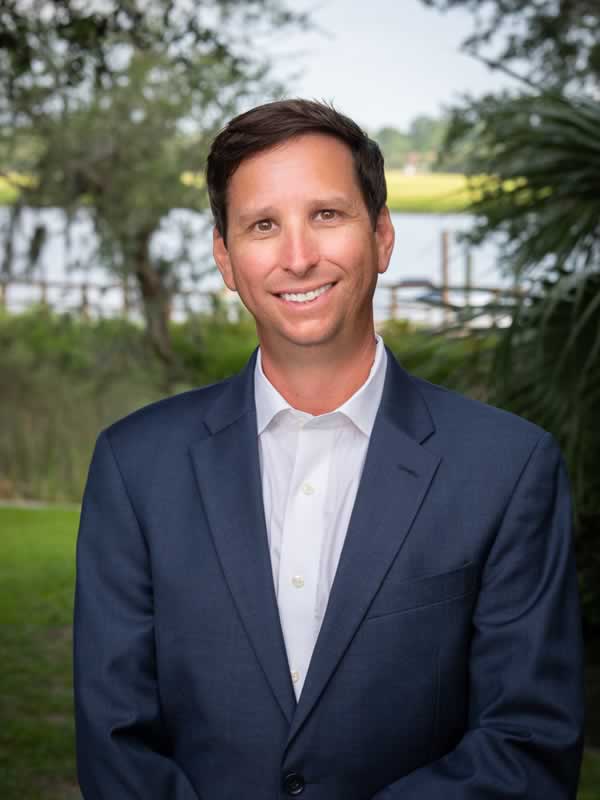David Heilman, principal for HomeGrown Financial in Mount Pleasant, South Carolina, didn’t feel like he had to shake up his approach to working with seniors when he became involved in the reverse mortgage industry.
Having experience in the health care field prior to entering the mortgage business, it mainly meant reorienting himself from serving the physical health needs of older Americans to now serving their financial health needs.
Heilman recently sat down with HousingWire’s Reverse Mortgage Daily (RMD) to go over his journey into the business for the newest edition of the ongoing “Origins” series, which traces the paths that industry professionals have taken into the space.
Switching from health care
Heilman originally worked in the health care administration field, stemming from undergraduate studies that focused on business administration within the health care sector. He maintained an internship in a hospital system and intended to launch a full career in that field, but he began feeling like a change might be in order.
“I was with a major health care group in the greater Charleston area, but I felt I wasn’t progressing quickly enough,” Heilman said. “It was more of a corporate environment than I had anticipated.”

Soon afterward, a fateful meeting with a couple active in the reverse mortgage business since roughly 1995 took notice of his decision to leave the hospital system in 2007. They asked if he’d be interested in coming aboard.
“I told them, ‘I don’t know what a reverse mortgage is, but I do know that you two are some of the finest people I’ve ever met, and I’d love to learn your business,’” Heilman recounted. “That, in a nutshell, is how I got started. I had mentors who guided me and they remain mentors to this day. I came at it from a senior services perspective rather than a mortgage or real estate angle.”
When asked about how steep his learning curve was in making such a transition, Heilman said it took about three months of research and a lot of reliance on faith to accomplish the goal.
“I was still young in my career, in my late 20s, and about to get married, so there were a lot of changes happening in my life,” Heilman said. “This was just another one of those changes.”
Those three months of what he calls “intensive research” brought him up to speed on what a reverse mortgage is, what the marketplace looked like and the dynamics involved in entering the business. Heilman credits his mentors, Paul and Barbara Franklin, with being major factors in getting him to make the switch.
“I did all that groundwork and, of course, I knew the caliber of the people who were reaching out to me, which was very attractive,” he said. “I would not have taken that leap of faith if I hadn’t known the quality of the folks I’d be teaming up with. Not everyone has that advantage.”
Getting up to speed
Those three months of research ultimately made Heilman comfortable in making the jump in 2007. The levels of business at that time necessitated the Franklins having help, and Heilman assisted with process implementation and the management of loan officers. Of course, not long after his entrance into the business came the 2008 financial crisis.
But the fact that such a disruption came so early in his reverse mortgage career helped steel him to the ideas of change being an industry constant, he said.
“I’ve kind of gotten used to lots of changes in the business happening and have been hardened by it over the years,” he said. “I continue to zig and zag, adapting to the changing times.”
In 2012, Heilman and the Franklins joined a larger outfit. Heilman helped with that transition but went out on his own in 2018. Today, 17 years after initially entering the business, he is the principal of his own company and remains committed to the reverse mortgage space.
“I officially went out on my own in 2018, but by then, I’d had 10 or 11 years of reverse mortgage experience under my belt,” Heilman said. “I had the luxury of being a salaried employee when I joined them in ’07. You talk about people trying to get started in this business, it’s very hard, especially when your only revenue comes from closings or completed sales.”
Starting his own company was a decision that took more than a year to execute, but Heilman credits his mentors and consistency in the business with being able to make the jump on his own.
Crossover skills
When asked if there are any particular crossover skills he brought from the health care field into the reverse mortgage industry, Heilman credits his early days in health care with his ability to establish a rapport with senior clients.
“At the hospital, I was part of a senior affinity program, which involved bringing programs, speakers and services to seniors who were members of this group,” he said. “It was a big marketing effort, really, to bring them into the hospital for non-critical situations.”
As a result, he spent a lot of time with seniors either one-on-one or in direct contact in non-medical situations. This proved to be a critical intelligence-gathering exercise for him.
“I got to understand their needs — health needs, lifestyle needs,” he said. “So, my big advantage was clearly having that background and understanding the clients I would be serving, whether in health care or financial services. And I think this is where most loan officers struggle to transition — you’ve got to have a ton of patience with this clientele.”
Heilman was a few minutes late to the interview for this story because of the time and attention required to establish a rapport with a client, a process that needs to be nurtured with time and patience.
“They want to talk, especially the older folks. Baby boomers and those we serve now are more transaction-oriented, but some of the older ones really just want to chat, and they have the time,” he said. “Patience is probably the best quality I learned — having patience with this clientele to listen and learn more about who they are and what they need.”





